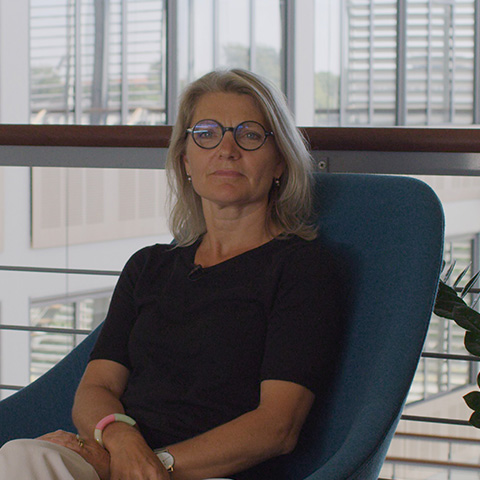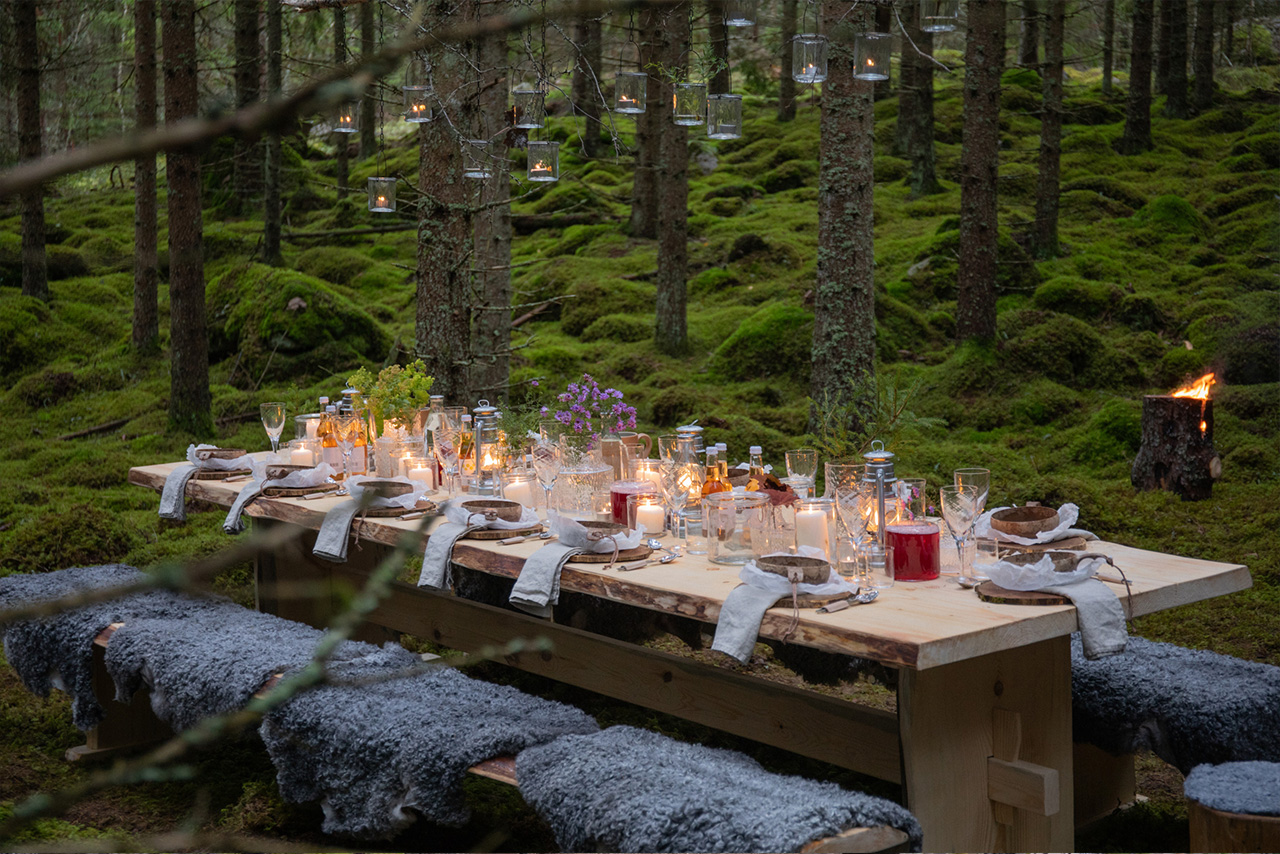
Double Dynamic Lighting - combining two worlds
Double Dynamic Lighting (DDL) is a lighting design concept for dynamic indoor lighting. In short, you adjust the electrical lighting in real time so that it complements daylight. This is to be able to create more motivating and engaging environments and increase well-being in indoor spaces. Meet professor Ellen Kathrine Hansen, one of the forces behind it.
Since 2017 the lighting technology and solution partners Tridonic, iGuzzini, Fagerhult and Zumtobel have teamed up with Aalborg University, Copenhagen, to develop and scientifically validate the ambitious Double Dynamic Lighting (DDL) concept. During these years, four studies has been Carried out at Aalborg University in Copenhagen, under the leading of Head of the Lighting Design Research Group professor Ellen Kathrine Hansen.
HOW TO EXPLAIN SOMETHING SIMPLE
Double Dynamic Lighting is, for some, not a new subject. But it was not an easy Task to define the concepts for the dynamics of the daylight and translate this into parameters that could be tested in lab and field tests and finally end up with a design guideline.
- In this case we had an idea that in a way is very basic, referring to a natural phenomenon, we all have a the variations in daylight we all desire – and yet the research process is something very complex, Hansen explains. We needed evidence on this basic level, to make a general concept that is research based and applicable in a broad manner. So we set up this basic, but also ambitious, target to see if we could define the qualities of the dynamic daylight, and translate it into general design parameters.
To be able to narrow it down to a research project, the group started by describing and defining – “What is it we talk about when we talk about the qualities of dynamic light?”.
I have a background in architecture, and a spacious understanding of lighting in space, Hansen elaborates. I have had the feeling for a long time, that we could do so much with dynamic and electrical lighting – to complement the qualities of the daylight. Some of the most important qualities of the daylight is the dynamics of the daylight, that is so difficult to grasp, and define – because it is endless in its variations. It is probably the design element that affects us the most.
A FOUR-LAYERED RESEARCH CAKE
The study was carried out in four different parts, that explored concepts such as “direct and diffused light”, “qualities from the daylight”, “flow of light”, “light modelling” and “light space”. When these components were in place, the group set up a small lab experiment in a working space built in Aalborg University. Test persons were submitted to four different settings with warm and/or cold light in diffused and direct lighting fixtures. The subjects in the study then filled out questionnaires with their perceived impressions from the different light settings.
̶ We wanted to investigate how people experienced this, Hansen describes. How do you feel and perceive the atmosphere in this space? Besides questionnaires and interviews we also defined words that the test persons could pick, to describe their feelings. I think, for me, it was very important to take our understanding of dynamic light back to this very fundamental understanding of human perception. How we perceive, and how this is based on a cultural heritage on how lighting appears in a space – based on daylight.
"There is a naturalness and connection to nature in light, but also a cultural heritage in understanding that lighting support the way we perceive and take in spaces."Ellen Kathrine Hansen, professor Aalborg University, Copenhagen.
THE DYNAMICS OF THE SKY
In the study a sky-scanner was used to regulate the lighting in the space, depending on the character of the outdoor lighting. This affected the colour temperature and the direct/diffused light in the test environment.
̶ When the character of the daylight is very overcast and non-dynamic we can compensate this, says Hansen. With this solution, you can compensate with the dynamics of the electrical lighting, having different variations that stimulates us from the daylight. When that is said, of course you can never ever make any lighting that is as good as the daylighting.
 "There is a naturalness and connection to nature in light, but also a cultural heritage in understanding that lighting support the way we perceive and take in spaces." Ellen Kathrine Hansen, professor Aalborg University, Copenhagen
"There is a naturalness and connection to nature in light, but also a cultural heritage in understanding that lighting support the way we perceive and take in spaces." Ellen Kathrine Hansen, professor Aalborg University, Copenhagen
AND THE RESULT?
The test persons in the study were exposed to cold and/or warm light, distributed with a direct and diffused light setting in a fixed office environment. In compared to static lighting, the dynamic lighting was described as having a higher visual comfort by the test persons. It was also perceived as pleasing, motivating and energizing.
Some of the testimonials describes the impact the dynamic daylight mix had on their work and perceived atmosphere:
“It feels like the daylight and the light in the room are blended together, in a way. So, the weather is like casted into the room, projected.”
“And then, at some point during the daytime, I don’t notice the lighting at all, and it feels very natural. It’s just there complementing the space and task.”
THE NEXT STEP
But where do we go from here?
̶ Our starting point in this study was to see the atmosphere in the space and how the lighting is perceived, says Hansen. We know that there are important neurological effects of daylight and lighting. Daylight has a naturalness and a connection to nature, but it also bears a cultural heritage. The way we build, understand the rhythm of the day and take in spaces – that is all depending on lighting. We wish to take this into a larger field study, to further develop our knowledge and the insights in this area.
Or as professor Hansen sums it up:
̶ We try to make two worlds meet, and make the design of lighting respond to one approach - that daylight and electrical lighting is complementing each other, connecting man and nature.
TEXT MARIA VÅRENIUS
PHOTO ALEXANDER HALL, MARTIN EDSTRÖM
Related News

Melanopic lux: lighting for education influenced by human biology
Light is essential in our daily lives, influencing our ability to see, overall well-being and performance. In educational environments, lighting quality can significantly impact students' focus, mood, and energy levels. So, how do we know what is the right amount and quality of light for this setting? Traditionally, light has been measured in lux, a unit of measurement for the intensity of light. It's used to measure how much light falls on a surface or the amount of light in a given space. One lux is the amount of light that falls on a surface that is one square meter in area when one lumen of light is spread out evenly. Recent advancements in research have unveiled the importance of melanopic lux, which goes beyond mere visibility. This measures how effectively light stimulates specific eye cells that regulate crucial non-visual functions such as sleep and alertness. In classrooms and lecture theatres, the melanopic ratio has become vital in lighting design, enabling educators to create spaces that support visual tasks and align with students' biological rhythms. In this article, we explore how lighting solutions can align with our biology, and how this helps to create optimum conditions for educational environments. The science of vision and light The human eye is a remarkable organ designed for high-resolution colour vision within a small area (approximately 2 degrees of the visual field) while relying on peripheral vision for motion detection. This dual-function system, shaped by evolution for survival, continues to influence how we perceive and interact with our surroundings. Our eyes are particularly susceptible to green and yellow light, reflecting our evolutionary adaptation to naturally lit environments. In contrast, blue light, which is chief in modern LED lighting, requires higher intensity to be perceived at the same level. Effective lighting design carefully considers brightness, timing, and distribution to support visual clarity and biological functions like mood and alertness. For example, exposure to bright light in the morning helps regulate circadian rhythms, boosting alertness and mitigating the effects of seasonal darkness. This is particularly important in educational environments, such as schools and universities, where lighting impacts mood, focus, and overall performance. Our Organic Response system provides an innovative solution tailored for these spaces. This smart lighting technology automatically optimises light levels, featuring daylight-responsive sensors and advanced occupancy detection, maintaining a balance between natural and artificial light. Doing so supports visual comfort and reduces energy consumption, making it an ideal choice for creating dynamic, efficient, and student-friendly learning environments. To further support students, well-lit spaces with minimal glare are essential for reducing eye strain and maintaining focus during extended study sessions. Adjusting light intensity and colour temperature for different tasks—such as reading, group discussions, or creative activities—enhances light's visual and non-visual effects. By integrating thoughtful lighting strategies like those offered by Organic Response, educational environments can promote healthier, more productive, and engaging learning experiences. Integrative lighting: Supporting health and well-being. Integrative lighting (also referred to as human-centred lighting) combines visual and non-visual benefits (such as emotional effects) to support biological rhythms and psychological well-being. This approach goes beyond traditional lighting solutions by considering how light impacts circadian rhythms and hormonal balance. Light exposure in the morning is critical for suppressing melatonin (the sleep hormone) and increasing cortisol (the alertness hormone). Proper timing helps align students' natural rhythms with school schedules, which often require a lot of focus. Consistent exposure to bright, cool light early in the day can enhance energy levels and cognitive performance. The melanopic ratio compares the spectral composition of a light source with daylight. Using this information, you can determine its melanopic lighting intensity. This enables the design of lighting setups that precisely meet both visual and biological lighting needs. Lighting recommendations for educational spaces Each learning environment has unique lighting needs. Libraries benefit from direct lighting on the floor, paired with ambient lighting on walls and ceilings. Vertical shelf lighting (200-300 lx) makes it easier to browse titles. Lecture halls, on the other hand, require glare-free, comfortable lighting with flexible control, ideally with pre-programmed scenarios. In auditoriums and classrooms, strong vertical lighting is crucial for clear visual communication, especially over greater distances, enhancing facial expressions and engagement. General lighting recommendations apply to all educational spaces. Our solutions meet industry standards, ensuring reading and writing areas maintain 500 lx for effective visual tasks. Using daylight-responsive sensors for luminaire rows can reduce energy consumption while maximising natural light. The number and arrangement of luminaires should be adjusted based on the room's size and function to ensure consistent illumination. The role of dynamic lighting A Double Dynamic lighting system can be a game-changer in educational environments. It allows for intensity and colour temperature adjustments to match the specific needs of activities, from quiet reading sessions to collaborative group work. Fagerhult's distinct approach to lighting means that our design is human-centric; we integrate scientific insight into light and human psychology, creating environments that support academic performance and well-being. Our focus on energy efficiency also means our advanced control systems optimise light usage while minimising energy consumption, contributing to a building’s sustainability goals. The customisable setting and flexible solutions ensure that educational environments can create tailored lighting profiles for different times of the day or specific learning activities. Long-term benefits of melanopic lighting Melanopic lighting, designed to mimic the natural light spectrum, helps regulate the circadian rhythm, which is essential for maintaining focus, energy, and emotional balance. In classrooms and study areas, proper lighting can reduce eye strain, improve sleep patterns, and enhance mood, which are critical for students' mental health and academic performance. By incorporating lighting that aligns with our biological needs, schools and universities can foster healthier, more productive learning environments,. This is particularly important during the winter months when daylight is limited. Whether through advanced tuneable white light systems, designs that maximise daylight, or energy-efficient solutions, we are dedicated to leading the way in lighting innovation for educational environments, delivering brighter futures—one classroom at a time.
The inspiration behind Nobel Week Lights: ”Light, art and technology intertwined.”
Nobel Week Lights has quickly become a beloved public celebration. During Nobel Week, Stockholm residents flock outdoors to marvel at the spectacular light installations, where contemporary lighting technology meets artistic expression. ”We aim to create a moment of gathering: around light and around something meaningful”, says Lara Szabo Greisman. Nobel Week Lights is a light festival that illuminates Stockholm during the darkest time of the year – a free cultural experience for everyone. Presented by the Nobel Prize Museum, the festival invites international and local artists, designers and students to create light artworks inspired by the Nobel Prize. The installations shed new light on the scientific discoveries, literature and peace efforts of Nobel laureates while offering a fresh perspective on the city. Fagerhult is Principal Partner of Nobel Week Lights 2024, and this year’s edition features 16 different light installations across Stockholm. The artworks can be experienced from 7–15 December, including ”The Wave”, a light installation by the art collective Vertigo, located in front of the Parliament House where visitors can walk right through the luminous wave. The Wave by Vertigo ”Light and art and creativity is incredibly intertwined because these are technologies that are constantly evolving. So part of the fun working with the artists is that they are constantly testing new technologies. And we see these incredible visual results which are based on just pure innovation”, says Lara Szabo Greisman, co-founder and producer of Nobel Week Lights. Lara Lara Szabo Greisman and Leading Lights by Les Ateliers BK The significance of light as a collective force, its ability to encapsulate life and death, joy and sorrow – indeed, the very essence of what it means to be human – makes lighting a powerful medium of artistic expression, she argues: ”The dream for the festival is that this becomes a personal experience for each and every member of the audience. A moment that they remember and cherish . A moment that they think about later and bring forward as their story of connecting with the city.”

